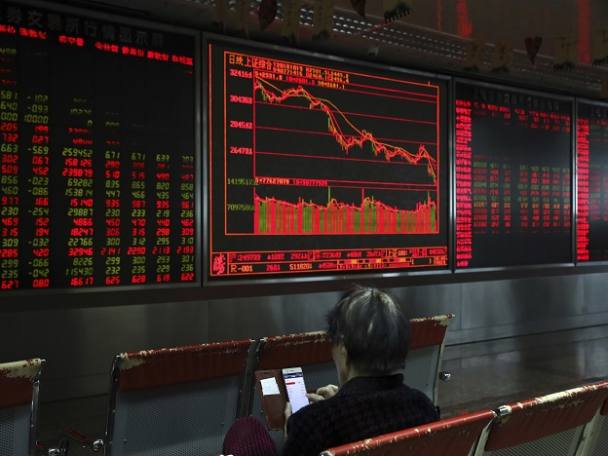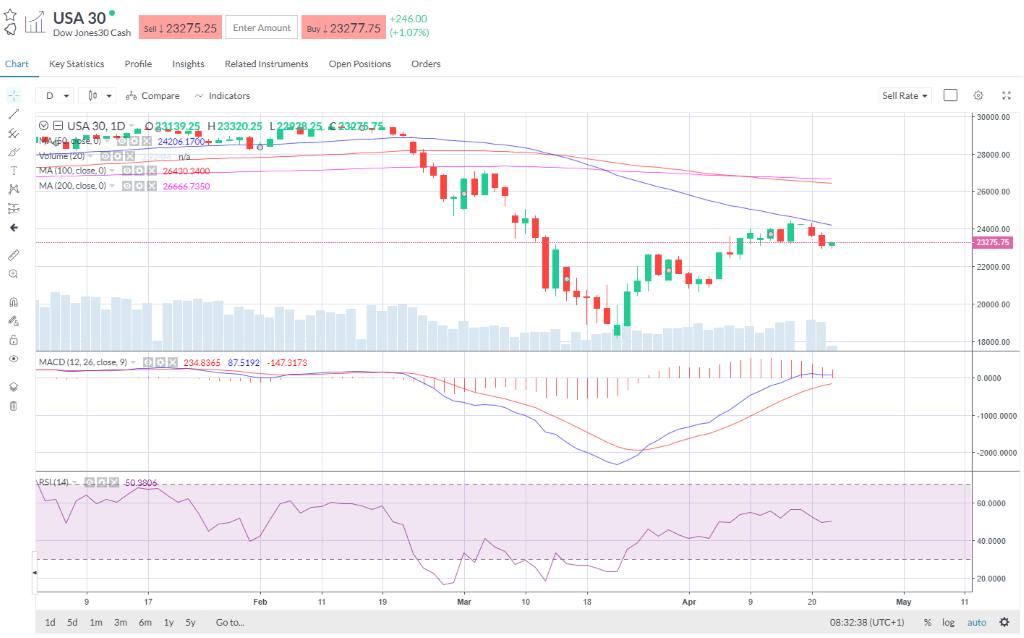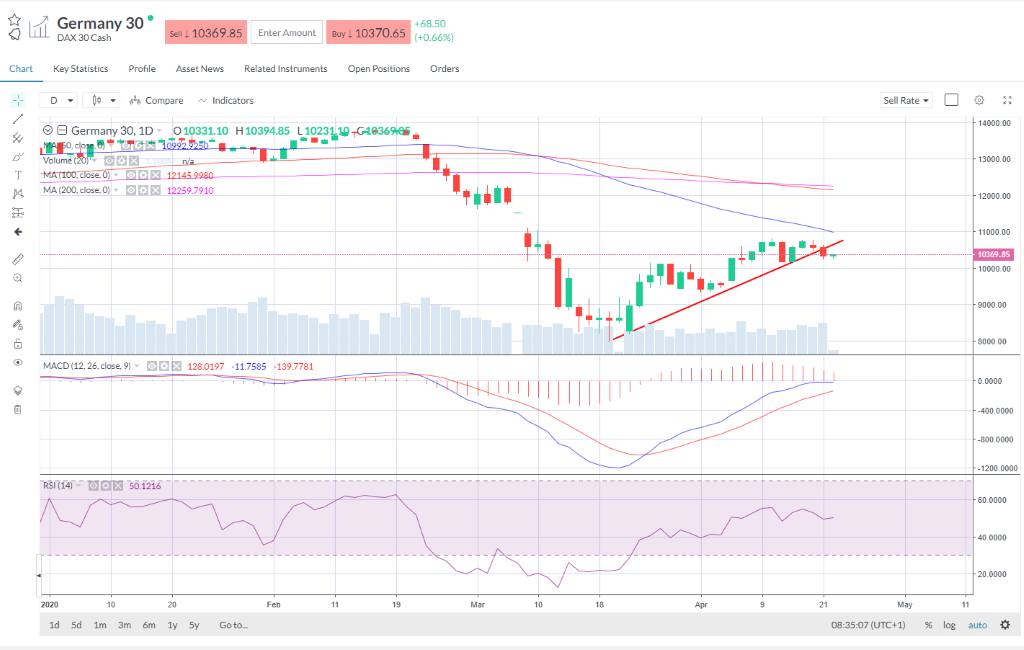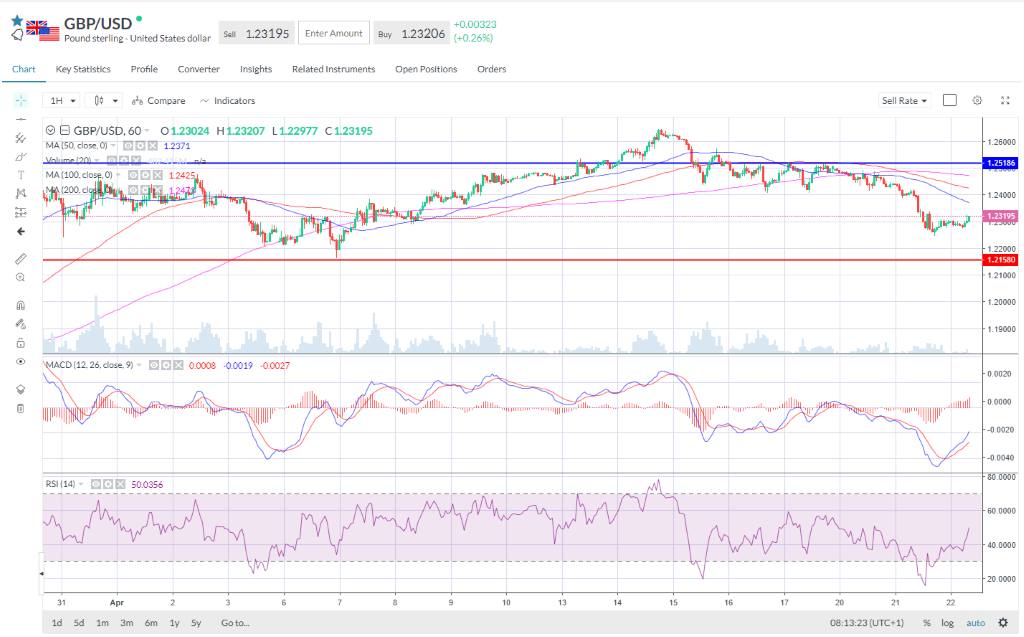European markets are cautiously higher after yesterday’s decline, but the daily momentum indicators are fading. The reality of economic collapse is being seen in oil markets, but - juiced by central bank support and of course being much more forward-looking than, for instance the June oil contract – equity markets are displaying greater optimism. I’d say oil markets are telling us how bad things are right now, while equity markets tell us how good or bad investors hope/fear things will be next year.
Now it’s the turn for Brent. Turmoil in global oil markets dragged Brent futures under $16, leaving the front month trading at its weakest since 1999. The collapse in WTI at the start of the week has spooked the market and now we see similar concerns about floating storage starting to fill up as physical storage constraints worrying WTI. The roll this Friday could be gappy, although Brent is cash settled, not physically, so in theory it ought not to be as troubled and negative prices are unlikely. That said, if global storage is running out – and that is what the Brent trade is starting to suggest – then there will be no bid and prices could hit zero.
WTI remains under pressure with the June contract suffering a ‘flash crash’ yesterday as it slumped as low as $6.50 before recovering above $10. The June contract, whilst not immediately facing the same liquidity problems as the May contract did on Monday, is going to be under pressure all the way to expiry with nowhere left in the US to take physical delivery. It too could turn negative if paper traders are left holding the baby close to expiry. July is trading around $18.40, August is above $21. Edward Morse, head of commodities at Citigroup, says oil could bounce back to $50 by the end of the year.
Meanwhile the damage is being felt in oil ETFs which are needing to shift their holdings further out in future months. The United States Oil Fund (USO) is ditching its June holdings as it tries to shore its balance sheet, and this will be having an impact on the front month trading. It will also be sharpening the super contango. It becomes a vicious circle as long as no one wants to take delivery. Yesterday saw more than 2m June contracts traded, the CME Group said, the busiest single day for the month ever.
The pain in oil markets is unsettling risk appetite more broadly, with the S&P 500 down 3% and the Dow shedding over 600 points yesterday. It was the worst day for the three main indices since April 1st. Charts and momentum suggesting the rally has lost steam and 50-day SMAs (blue line) almost seem to be frightening the market and forcing it to back off. The question is whether sentiment sours from here and we retest the lows or it’s just a pause in the rally. Earnings are not telling us an awful lot as uncertainty reigns. The key is the emergence from lockdown and restart of economies. And of course, finding a vaccine.
Whilst European markets are higher today after yesterday’s drop, the momentum is fading and the DAX has broken under trend support. Again the 50-day SMA is major barrier.
A major boost for Netflix as it added almost 16m new subscribers in the first quarter, well ahead of expectations. The company has been boosted by lockdown measures and should see more net subscriber adds in Q2 but notes in the circumstances it’s all ‘guess work’. But this might be as good as it gets this year – Netflix won’t get a better opportunity to gain new members than now. I’d also be concerned that after such a big runup in the stock to all-time highs, the upside is pretty well discounted now and viewing figures will start to decline as lockdowns end. A stronger dollar is hitting foreign earnings and spending on content is delayed by production shutdowns. EPS was a slight miss but Netflix profits are always a little lumpy due to inconsistent spending on content.
In FX, GBPUSD broke down through near-term horizontal support and out of its range yesterday and with the bearish bias persisting the next level comes in around 1.2160, the Apr 6th and late March swing lows. Near-term though the 1hr MACD is positive after a potentially bullish crossover late yesterday.
Neil Wilson is chief markets analyst at Markets.com














